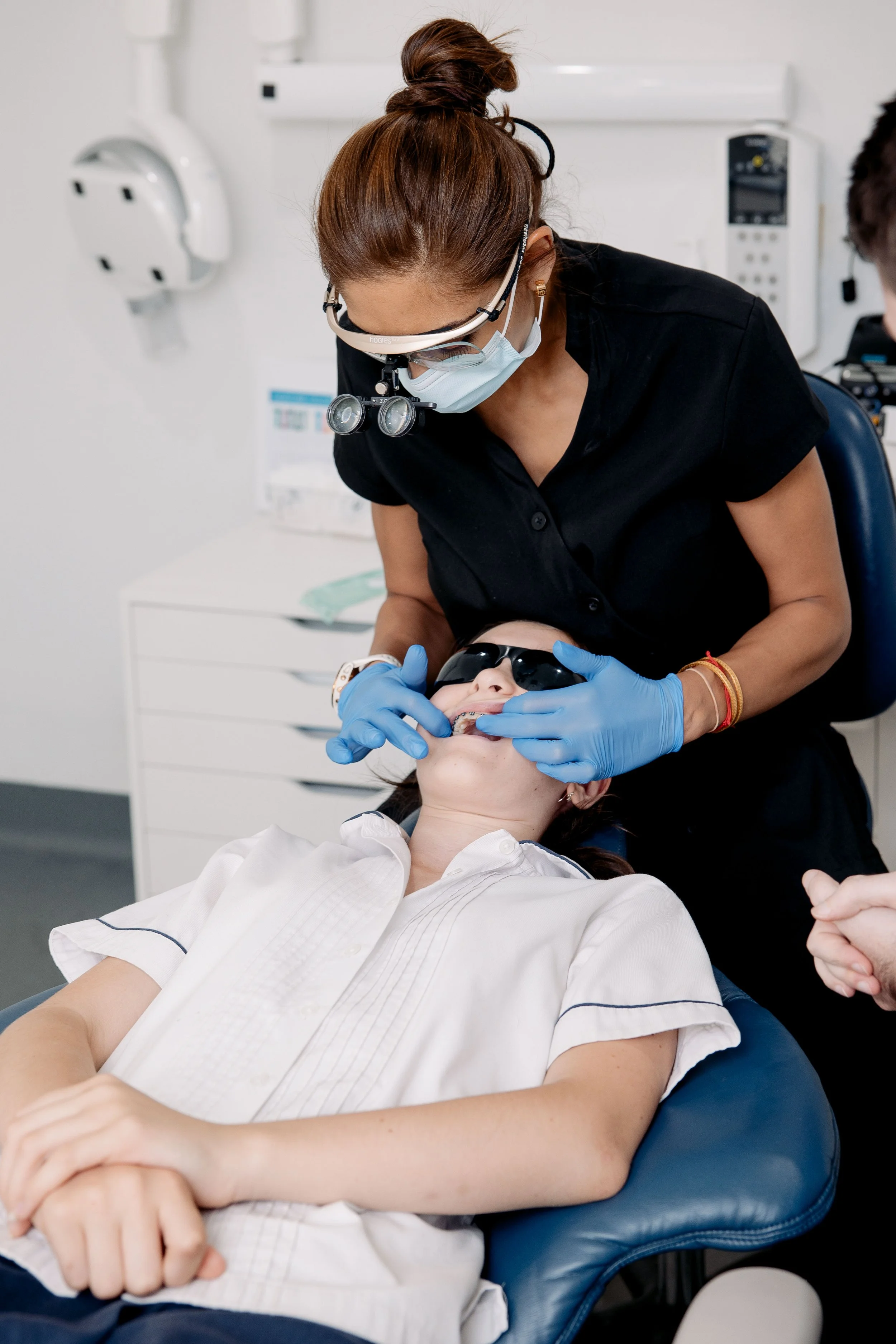Braces or Invisalign: Which Teeth Straightening Treatment is Right for You?
If you're looking to straighten your teeth, you may be wondering whether braces or Invisalign is the best option for you. As a dentist at Berera Dental in Leichhardt, Sydney, I often get asked this question. So, in this blog, I'll be discussing the differences between braces and Invisalign, their pros and cons, and which one is the best option for you.
Braces:
Braces are the traditional method of teeth straightening. They consist of metal or ceramic brackets that are glued to your teeth and connected with wires. The wires are tightened periodically to gradually move your teeth into the desired position. Braces are typically worn for 1-3 years, depending on the severity of your case.
Pros of braces:
Braces can treat more severe orthodontic issues, such as crossbites, overbites, and underbites.
They are less likely to get lost or misplaced since they are fixed to your teeth.
They require less maintenance than Invisalign since you don't have to remove them for eating or brushing.
Cons of braces:
Braces are more noticeable and can affect your appearance.
They can cause discomfort or irritation in the mouth, especially in the initial stages or after tightening appointments.
They can make it difficult to clean your teeth and gums properly.
Invisalign:
Invisalign, on the other hand, is a newer and more discreet method of teeth straightening. It uses clear plastic aligners that are custom-made for your teeth. The aligners are worn for 20-22 hours a day and changed every 1-2 weeks to gradually move your teeth into the desired position. Invisalign treatment typically takes 6-18 months, depending on the complexity of your case.
Pros of Invisalign:
Invisalign aligners are nearly invisible and don't affect your appearance.
They are more comfortable than braces and less likely to cause irritation or soreness.
They are removable, which makes eating and cleaning your teeth and gums easier.
Cons of Invisalign:
Invisalign may not be suitable for severe orthodontic cases or complex tooth movements.
They require more discipline to wear since they are removable and can be lost or misplaced.
They may not be covered by insurance, and the cost can be higher than braces.
Which one is the best option for you?
Ultimately, the choice between braces and Invisalign depends on your specific orthodontic needs, lifestyle, and preferences. I recommend that you visit a dentist for a comprehensive orthodontic evaluation to determine which option is best for you. We will be able to examine your teeth, take X-rays and photographs, and discuss your treatment goals and budget to help you make an informed decision.
If you have a more complex orthodontic issue, such as a severe overbite or underbite, braces may be the better option for you. However, if you want a more discreet and comfortable treatment option, Invisalign may be the way to go.
At Berera Dental, we offer both braces and Invisalign treatments to help you achieve a straighter and healthier smile. We use the latest technology and techniques to ensure that your treatment is as efficient and comfortable as possible.
Conclusion:
Braces and Invisalign are both effective teeth straightening treatments, but they have their pros and cons. The choice between the two depends on your specific needs and preferences. At Berera Dental in Leichhardt, Sydney, we can help you determine which option is best for you and provide you with high-quality orthodontic care. Contact us today to schedule your consultation with Leichhardt dentist

